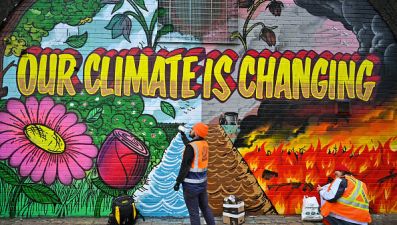Ireland’s carbon emissions reduced by just 3.6 per cent last year compared to 2019 despite widespread Covid-19 restrictions on activities, new figures show.
Residential and agricultural greenhouse gases increased, underlining the challenge facing the country in attempting to halve overall emissions by 2030, according to provisional figures issued by the Environmental Protection Agency (EPA).
Household emissions increased by 9 per cent caused by “a substantial increase in carbon-intensive fossil fuel use driven by low fuel prices and working from home”.
Agriculture emissions increased by 1.4 per cent in 2020, “driven by increased activity in all areas, including a 3.2 per cent increase in the number of dairy cows”.
Lockdowns resulted in a 15.7 per cent decline in transport emissions, the largest sectoral reduction. There was a 7.9 per cent reduction in energy industry emissions as peat-fuelled electricity generation fell by 51 per cent, coinciding with a 15 per cent increase in wind generation.

This was despite a similar level of electricity demand to 2019, indicating a positive impact of increased renewable energy use.
“While the overall reduction in emissions is welcome, the majority – almost two million tonnes of CO2 equivalent – of the reduction was due to a short-term decrease in transport emissions due to the Covid-19 pandemic, which is likely to be once-off,” the EPA report warns.
EPA director general Laura Burke welcomed the 2020 reduction on top of a decline in 2019 but highlighted the need for greater urgency in cutting emissions.
“Limited reduction in emissions during 2020, at a time of profound change to economic and social activity due to the Covid-19 pandemic, highlight the scale of action needed across all parts of our economy and society to meet the 51 per cent emissions reduction by 2030 set within the 2021 Climate Act. Urgent action is also necessary to avoid a growth in GHGs [greenhouse gases] during post-Covid economic recovery,” she said.







